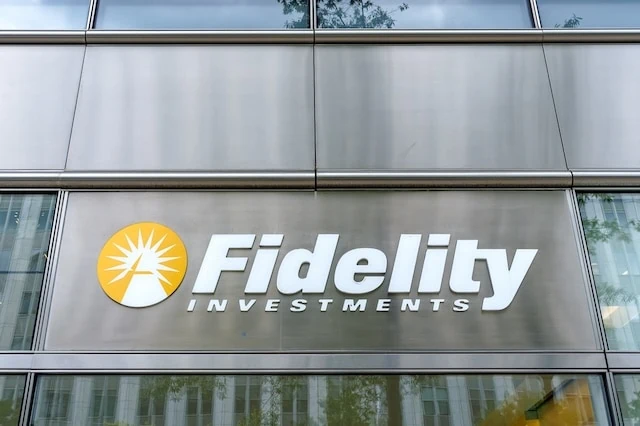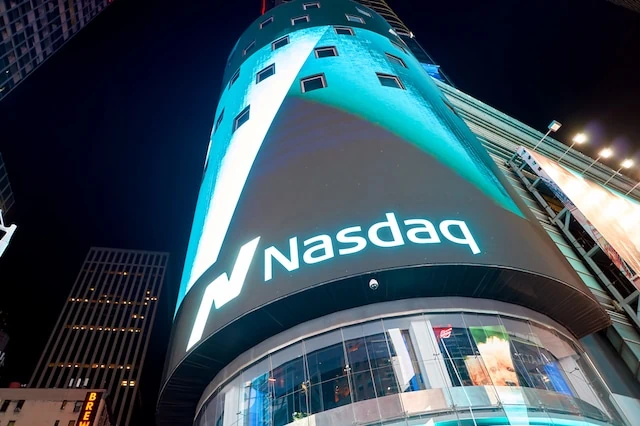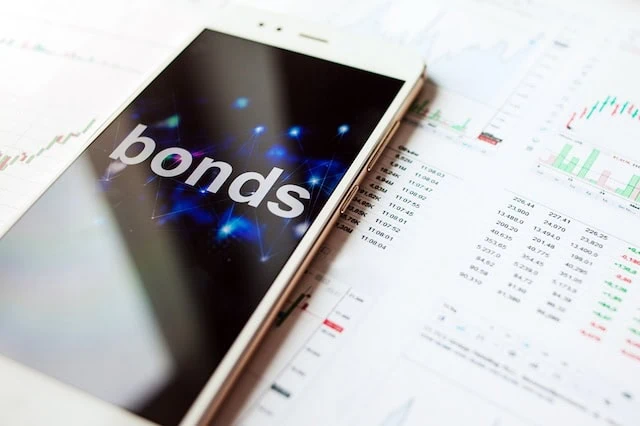Fidelity is known for a lot of things—their widely used online brokerage accounts, their well-run actively managed mutual funds, and their financial planning resources, among others.
But Fidelity’s index funds should be given their due.
At a time when prices on just about everything seem to be going up, Fidelity index funds’ prices have remained both stable and low. Indeed, many of Fidelity’s indexed products charge exceedingly thin fees—often at or at least near the bottom of their category.
They also keep investing cheap in another way that only a select few other fund providers can brag: investment minimums. You see, even funds with extremely small expense fees can sometimes require an initial investment in the thousands of dollars. But dozens of Fidelity index funds have no investment minimums whatsoever—you can get started for as little as one buck.
The best Fidelity index funds, of course, boast all of these qualities—all while tracking well-built indexes that should give their funds an elevated chance of success. Today, I’m going to introduce you to several Fidelity products that fit that bill.
Disclaimer: This article does not constitute individualized investment advice. These securities appear for your consideration and not as personalized investment recommendations. Act at your own discretion.
Featured Financial Products
Why Fidelity?

Fidelity is a leader in mutual funds (and ETFs, for that matter) and has been a force in the industry since the launch of its Fidelity Puritan Fund (FPURX) back in 1947.
Today, this premier mutual fund company has more than $12.4 trillion in assets under administration thanks in large part to the success of its talented fund managers. Most notably, that includes Peter Lynch, the longtime manager of the Fidelity Magellan Fund (FMAGX) who averaged an incredible 29.2% per year between 1977 and 1990.
However, while Fidelity first built its name on actively managed funds, over the past three decades, the firm has built out its low-cost and even no-cost index funds as part of the movement to reduce expense ratios and transaction costs for individual investors. And I’m going to talk about the latter with you today.
Why Index Funds?

An index fund is run not by one or more human managers making investment selections, but by a rules-based benchmark called an “index” that measures the performance of a group of assets. An index fund “tracks” the index by actually investing in all (or in some cases, a representative sampling of) the underlying assets. An index’s strategy can be broad, like the S&P 500, which measures a wide assortment of American companies. Or the focus can be as narrow as, say, high-quality pastry makers headquartered in the United Kingdom.
While I don’t necessarily recommend buying my hypothetical Great British Bake-Off Index Fund, I do recommend buying index funds in general, for a few reasons.
They’re typically cheaper because you’re not paying managers to research and select investments. An index fund technically has a manager overseeing the fund, but they’re not performing stock research and deciding on trades—the index’s rules determine those actions. Thus, fund providers can afford to charge (often much) lower fees index funds.
Index funds tend to perform well, too, compared to comparable actively managed funds. I’ll provide a pretty stark example later, but just know that human managers often struggle to beat the benchmark indexes. So, if you have a fund that cheaply tracks a benchmark index, and many human managers can’t even beat that benchmark index … that index fund starts to look awfully good.
Also worth noting? Turnover—how much the fund tends to buy and sell holdings—is often extremely low in index funds, as only a handful of holdings tend to enter or leave the underlying index in a given year. As a result, they typically make little to no capital gains distributions at the end of the year. The Fidelity funds I’m about to detail all sport minimal turnover, which makes them very tax-efficient investments for taxable brokerage accounts.
How Were the Best Fidelity Index Funds Selected?

While Fidelity offers a few hundred mutual funds, the lion’s share of those are actively managed. Even then, we’re still starting at a group of more than 60 Fidelity index mutual funds, and while diversification is important, no investment basket needs that many eggs.
So, I started my search with a quality screen, including only Fidelity index funds that have earned a Gold Morningstar Medalist rating.
Unlike Morningstar’s Star ratings, which are based upon past performance, Morningstar Medalist ratings are a forward-looking analytical view of a fund. Per Morningstar:
“For actively managed funds, the top three ratings of Gold, Silver, and Bronze all indicate that our analysts expect the rated investment vehicle to produce positive alpha relative to its Morningstar Category index over the long term, meaning a period of at least five years. For passive strategies, the same ratings indicate that we expect the fund to deliver alpha relative to its Morningstar Category index that is above the lesser of the category median or zero over the long term.”
As I’ve written in other WealthUp articles, a Medalist rating doesn’t mean Morningstar is necessarily bullish on the underlying asset class or categorization. It’s merely an expression of confidence in the fund compared to its peers.
Fidelity actually has a couple dozen Gold-rated index funds, but several of them are specific share classes that are only available to certain subsets of investors—those enrolled in Fidelity Wealth Services, for instance, or those enrolled in eligible employer-sponsored retirement plans. So I’ve further narrowed the list to only Investor-class index funds, which are available to just about anyone.
Importantly, these funds typically offer no investment minimums, meaning you can get started for as little as one dollar.
From the remaining universe of funds, I’ve selected some core and satellite offerings that exemplify the best Fidelity has to offer.
The Best Fidelity Index Funds to Buy

Every index fund on this list, in addition to being Gold-rated, is as friendly on the wallet as you could ask for. Specifically, the best Fidelity index funds boast:
- Extremely low fees. Specifically, their fees are in the bottom 20% of all funds in their Morningstar Category.
- No investment minimums. Many mutual fund providers have investment minimums in the hundreds or even thousands of dollars. But these funds allow you to buy with whatever you’ve got—even if that’s just a lonely greenback.
Let’s get started!
1. Fidelity 500 Index Fund

- Style: U.S. large-cap stock
- Assets under management: $631.6 billion
- Expense ratio: 0.015%, or 15¢ per year for every $1,000 invested
- Dividend yield: 1.2%
It’s one of Fidelity’s best mutual funds overall, so naturally, Fidelity 500 Index Fund (FXAIX) also belongs among Fidelity’s best index mutual funds.
If a major mutual fund provider’s lineup includes a cheap S&P 500 index fund, chances are it’ll be one of their best-rated funds. Here’s the logic. The S&P 500 Index is commonly used as a performance benchmark for mutual funds that invest in U.S.-based large-cap stocks. But the majority of fund managers who run these funds typically struggle to beat their benchmark. According to S&P Dow Jones Indices, “60% of all active large-cap U.S. equity funds underperformed the S&P 500.” That’s no anomaly: Thanks to yet another 365 days of lagging in 2023, the majority of active managers have now failed to beat the S&P 500 in 21 of the past 24 years.
So, if you can’t beat it, join it.
Fidelity 500 Index Fund tracks the S&P 500—a collection of some of the largest American companies, but to clarify, not the 500 largest American companies. To be included in this index, a company must have a market capitalization of at least $18.0 billion, its shares must be highly liquid (shares are frequently bought and sold), and at least 50% of its outstanding shares must be available for public trading, among other criteria. A company must also have positive earnings in the most recent quarter, and the sum of its previous four quarters must be positive—two traits that weed out at least a few massive firms that would otherwise be included.
Note: Once a company becomes an S&P 500 component, it’s not automatically kicked out if it fails to meet all of the criteria. However, the selection committee would take this under consideration and possibly boot the company.
People like to consider the S&P 500 a reflection of the U.S. economy. But it’s hardly a perfect representation. For instance, the technology sector accounts for nearly 30% of FXAIX’s assets. Real estate, materials, and utilities merit less than 3% apiece. This is in no small part because, like many indexes, the S&P 500 is market capitalization-weighted, which means the greater the size of the company, the more “weight” it’s given in the index. Currently, trillion-dollar-plus companies Microsoft (MSFT), Apple (AAPL), and Nvidia (NVDA) sit atop Fidelity 500 Index Fund’s holdings list.
Turnover, which is how much the fund tends to buy and sell holdings, is always low, given that only a handful of stocks enter or leave the index in any given year. This tamps down (and often eliminates) capital-gains distributions, which receive unfavorable tax treatment. This makes FXAIX an extremely tax-efficient option for taxable brokerage accounts.
It’s this combination of traits—the S&P 500’s excellence as an index, bare-bones costs, and tax efficiency—that earn FXAIX a Gold Medalist rating from Morningstar. That makes this one of the best Fidelity index funds to buy, especially if you’re building the core of your portfolio.
Want to learn more about FXAIX? Check out the Fidelity provider site.
Related: 10 Best Fidelity Funds to Buy
Featured Financial Products
2. Fidelity Nasdaq Composite Index Fund

- Style: U.S. large-cap growth stock
- Assets under management: $18.7 billion
- Expense ratio: 0.29%, or $2.90 per year for every $1,000 invested
- Dividend yield: 0.5%
The Fidelity Nasdaq Composite Index Fund (FNCMX) is an even better example of how a “broad market index fund” doesn’t necessarily mean “well-rounded.”
When you visit a financial website or look at a business channel chyron, you’ll typically see data for the S&P 500 and Dow Jones Industrial Average prominently displayed. That’s because when the average person asks “how did the stock market do today?” they’re typically asking about one of these two benchmarks of American stock market performance.
They’re probably not asking about the Nasdaq Composite Index, and yet it too holds a place of prominence right alongside those other two venerable market indexes. This market cap-weighted index is made up of all the roughly 3,700 stocks that are listed on the Nasdaq Composite, which serves alongside the New York Stock Exchange as the world’s two largest stock exchanges by market capitalization.
But it’s best known not as a broad market index, but as a proxy of the tech sector.
Consider FNCMX. This Fidelity index fund holds 3,200 Nasdaq Composite stocks—not the index’s full roster, but a representative amount accounting for the vast majority of the index’s market cap. As I write this, nearly 51% of the fund’s assets are invested in the information technology sector. Another 15% is in the tech-esque communication services sector, which includes top-10 holdings Meta Platforms (META) and Alphabet (GOOGL). Another 13% of that is in consumer discretionary—and 9 of those points are in tech-esque top-10 holdings Amazon.com (AMZN) and Tesla (TSLA).
In other words, without even considering any additional companies that aren’t actually in the tech sector but whose businesses still very much belong, you have roughly three-quarters of the index wrapped up in technology or tech-esque firms. So FNCMX very much has a “growthy” profile.
Other aspects of Fidelity Nasdaq Composite Index worth noting? For one, there are some significant single-stock risks—Microsoft accounts for more than 10% of assets, while Apple and Nvidia sit at 10% and more than 8%, respectively. In fact, by weight, the top 10 holdings are responsible for more of FNCMX’s performance than the other 3,000-plus stocks combined. Also, while it’s categorized as a U.S. fund, Fidelity Nasdaq Composite Index does have a small 4% allocation to foreign firms by virtue of their listing on the Nasdaq.
While most of this serves as a warning about the potential risks, this has been one of Fidelity’s best index funds for a long time. FNCMX has beaten the category average over every meaningful time frame, and it’s in the top 10% of its category over the trailing 10- and 15-year periods.
Want to learn more about FNCMX? Check out the Fidelity provider site.
Related: 10 Best Vanguard Funds to Buy for the Everyday Investor
3. Fidelity Mid Cap Index Fund

- Style: U.S. mid-cap stock
- Assets under management: $39.6 billion
- Expense ratio: 0.025%, or 25¢ per year for every $1,000 invested
- Dividend yield: 0.9%
Mid-cap stocks are a way to thread the needle between the relative size and stability of large-cap stocks and the high growth potential of small-cap stocks. Indeed, this ideal middle ground has earned mid-caps the nickname of “Goldilocks” stocks.
“In any given 1-year rolling period since 2003, small-, mid-, and large-cap stocks have outperformed 33%, 26%, and 41% of the time,” says investment company Hennessy Funds. “However, the longer mid-cap stocks are held, the more often they outperformed. In fact, 60% of the time, mid-caps outperformed small- and large-cap stocks over any 10-year rolling period in the past 20 years.”
Better still? During the 20-year period (through 9/30/23) that Hennessy studied, it found that while mid-caps delivered higher risk than large caps, they delivered better returns … and they generated both lower risk and higher returns than small caps.
Fidelity Mid Cap Index Fund (FSMDX) is an exceedingly cost-efficient way to tap this area of the market. FSMDX tracks the Russell MidCap Index, which is made up of the 800 smallest stocks in the Russell 1000 (which is itself an index of the U.S. market’s 1,000 largest stocks). As a result, you’re getting exposure to 800-plus mostly mid-cap stocks—the fund is 75% invested in mids, but it does have about 10% of assets in smaller large caps, and another 15% in larger small caps.
This might sound odd, but it’s actually common for 20%-30% of a mid-cap fund’s holdings to bleed into small- and/or large-company territory. That said, Morningstar notes that FSMDX “tends to go higher up the market-cap ladder than other mid-cap indexes, favoring large-cap stocks that tend to be more established than mid-cap stocks.”
Sector weights will naturally change over time as certain businesses come into and go out of favor, but right now, industrials are tops at 20%, followed by financials (16%), information technology (13%), and consumer discretionary stocks (11%). Also, thanks to both the market cap-weighting of the Russell MidCap Index and the high number of holdings, single-stock risk is minimal—even top weights Phillips 66 (PSX) and Parker Hannifin (PH) are weighted at a mere 0.6%.
Want to learn more about FSMDX? Check out the Fidelity provider site.
Related: 10 Best Vanguard Index Funds to Buy
4. Fidelity ZERO Extended Market Index Fund

- Style: U.S. mid- and small-cap stock
- Assets under management: $1.9 billion
- Expense ratio: None
- Dividend yield: 1.2%
A little bit further along the risk-reward spectrum is the Fidelity ZERO Extended Market Index Fund (FZIPX), which includes mid-cap stocks and small-cap stocks (market caps below $2 billion).
The basic premise behind small-cap stocks is the business law of large numbers—the larger your company, the harder it is to sustain high growth rates. (And conversely, the smaller your company, the easier a time you should have delivering rapid growth.) As it was aptly explained to me: “It’s a lot easier to double your revenues when you’re starting from $1 million instead of $1 billion.” Also, as these stocks start hitting the radar of institutional investors and fund managers, or begin qualifying for certain indexes that force index funds to buy them, they can enjoy sudden large-scale investments that drive their prices even higher.
There’s more risk, of course. Their revenues might be dependent on fewer products or services—meaning a single disruption could have massive financial consequences. They also have less access to capital than their larger peers, so they’re less likely to get a lifeline should they suffer from broader economic headwinds. So this is the definition of “higher risk, higher reward.”
Because mid- and small-cap stocks are considered significantly different from one another, many funds will invest primarily in one or the other. However, Fidelity ZERO Extended Market Index Fund invests significantly in both.
FZIPX tracks the Fidelity U.S. Extended Investable Market Index, which considers mid- and small-cap stocks to be “the top 2,500 U.S. companies, excluding the largest 500 companies, based on float-adjusted market capitalization.” (Float-adjusted market cap weighting accounts only for market capitalization based on the “float,” which is shares available for public trading. It doesn’t consider private or non-transferable shares.) The result is a roughly 70/30 blend of more than 2,100 small- and mid-cap stocks. Single-stock risk is characteristically minimal; even FZIPX’s largest holdings account for less than 1% of assets each.
Fidelity ZERO Extended Market Index Fund is meant to be a complementary fund to Fidelity ZERO Large Cap Index Fund (FNILX), which holds the 500 largest stocks by float-adjusted market cap—effectively allowing you to tweak your large- and your mid- and small-cap allocations without any overlap in the stocks that you hold.
Importantly, FZIPX is part of the Fidelity ZERO lineup of funds. They’re free to own and have zero minimum investment requirements, but you can only buy them through an individual Fidelity account, such as a brokerage or individual retirement account (IRA). However, if you don’t have a Fidelity account and don’t feel like opening one, the closest alternative is the Fidelity Extended Market Index Fund (FSMAX). It’s a direct complement to the Fidelity 500 Index Fund and charges just 0.035%, or 35¢ per year for every $1,000 invested. Just note that it has slightly higher mid-cap weight and even a little large-cap exposure. It also has a lower Morningstar Medalist rating, at Bronze.
Want to learn more about FZIPX? Check out the Fidelity provider site.
Related: 13 Dividend Kings for Royally Resilient Income
5. Fidelity Total Market Index Fund

- Style: U.S. all-cap stock
- Assets under management: $107.4 billion
- Expense ratio: 0.015%, or 15¢ per year for every $1,000 invested
- Dividend yield: 1.1%
Who says you can’t have it all?
That’s the idea behind total-market funds like the Fidelity Total Market Index Fund (FSKAX). The fund, which tries to replicate the Dow Jones U.S. Total Stock Market Index, holds nearly 3,900 stocks. That’s not the whole U.S. stock market, but it’s mighty close, and more than enough for the average investor.
A total-market fund typically won’t give you equal exposure to all the different stock sizes—they’re typically market cap-weighted, which naturally means they’re heavily tilted toward large caps. And so it is with FSKAX, which currently invests a little more than 70% of assets into large caps, another 20% in mid-caps, and the remainder into small caps.
If you don’t like Fidelity Total Market Index’s ratio of large-, mid-, and small-cap stocks, you’re better off using a blend of market cap-specific funds to get the proportions you prefer.
However, if you want all of your U.S. stock exposure in one fund, products like FSKAX are for you. They ensure that while you do have some access to growthier smalls and mids, you’re still primarily invested in relatively stable large companies. And they typically do so for a song—FSKAX is particularly cheap, at 1.5 basis points annually. (A basis point is one one-hundredth of a percentage point.) Throw in a Gold Morningstar Medalist rating—awarded for its excellent investment process and paper-thin fees—and FSKAX is one of the best Fidelity index funds to buy for your portfolio core.
Want to learn more about FSKAX? Check out the Fidelity provider site.
Related: 7 Best Schwab Funds to Buy
6. Fidelity Total International Index Fund

- Style: International all-cap stock
- Assets under management: $13.5 billion
- Expense ratio: 0.06%, or 60¢ per year for every $1,000 invested
- Dividend yield: 2.6%
If you’re looking for a little exposure to stocks outside of the U.S. … good! You should! Yes, U.S. markets have long been among the most productive in the world, and if you believe in the American economy’s ability to keep growing, that should remain the case—and thus, most experts would tell you to own primarily U.S. stock and bond funds.
But those same experts would tell you that it’s worth having at least some international exposure. And you can do that for cheap through Fidelity Total International Index Fund (FTIHX).
Fidelity Total International Index tries to replicate the performance of the MSCI ACWI (All Country World Index) ex USA Investable Market Index. This market-cap weighted index is designed to provide exposure to stocks of all sizes across both developed (mature, slow-growth) and emerging (volatile but higher-growth) markets.
But as many broad international funds are wont to do, FTIHX leans decidedly toward large caps, which make up 76% of assets. Mid-caps take up another 18%, leaving smalls with a mid-single-digit remainder. It’s also top-heavy in developed countries, which account for three-fourths of the portfolio; Japan (16%), the U.K. (9%), and Canada (8%) are top country exposures right now. But you’re still getting a fair amount of performance from emerging markets such as China (6%) and India (5%).
You might have noticed a much higher dividend yield than any of the aforementioned U.S.-centric stock funds. That’s pretty typical for international funds that are thick with developed-market blue chips like Swiss food giant Nestlé (NSRGY) and British-Swedish pharma firm AstraZeneca (AZN).
Want to learn more about FTIHX? Check out the Fidelity provider site.
Related: 7 Best Schwab Index Funds to Buy
Featured Financial Products
7. Fidelity U.S. Bond Index Fund

- Style: Intermediate-term core bond
- Assets under management: $61.0 billion
- Expense ratio: 0.025%, or 25¢ per year for every $1,000 invested
- SEC yield: 4.3%*
Most investors need some exposure to bonds, which is debt that’s issued by governments, companies, and other entities. Their interest payments and relative lack of volatility make them an excellent tool for providing a portfolio with stability and income. But how much bond exposure you need will vary by age—because they’re better at protecting wealth than growing it, people typically start with little in the way of bond holdings earlier in life, then gradually hold more bonds as they get closer to (and into) retirement.
But individual bonds can be a hassle. Data and research on individual issues is much thinner than it is for publicly traded stocks. And some bonds have minimum investments in the tens of thousands of dollars. But you can blunt these problems by purchasing a bond fund, which allows you to invest in hundreds or even thousands of bonds with a single click—and, in many cases, very low fees.
The Fidelity U.S. Bond Index Fund (FXNAX) tries to replicate the Bloomberg U.S. Aggregate Bond Index. Nicknamed simply “the Agg,” it’s arguably the king of bond indexes; hundreds of billions of dollars are invested in funds that track this benchmark.
FXNAX provides exposure to a few core, investment-grade debt assets. U.S. Treasuries are tops at more than 40% of assets, followed by corporate bonds and pass-through mortgage-backed securities (MBSes) at roughly 26% apiece. Past that, there are sprinkles of U.S. agency bonds, foreign sovereign debt, commercial MBSes, and other debt. This diversification makes it a prime core bond holding.
Maturities of FXNAX’s holdings range from just a few months to more than 20 years, but on average, portfolio maturity sits around eight years. Duration—a measure of interest-rate sensitivity—is slightly above 6 years. That implies that if interest rates rose by 1 percentage point, the fund would decline by 6%, and vice versa. (The actual calculation of duration, which involves weighted averaging of the bond’s cash flows, is more complex than that, but it’s a reasonable enough simplification that helps investors understand the greater the duration, the greater the interest-rate risk.)
It doesn’t get much cheaper than FXANX, either, at just 0.025% annually—a tiny fraction of the average intermediate-term bond fund’s 0.55% in annual fees.
* SEC yield reflects the interest earned across the most recent 30-day period. This is a standard measure for funds holding bonds and preferred stocks.
Want to learn more about FXNAX? Check out the Fidelity provider site.
Related: 7 Best T. Rowe Price Funds to Buy
8. Fidelity Short-Term Treasury Bond Index Fund

- Style: Short-term government bond
- Assets under management: $3.0 billion
- Expense ratio: 0.03%, or 30¢ per year for every $1,000 invested
- SEC yield: 4.3%
Stocks aren’t the only asset with varying levels of risk and potential reward. Bonds can run the gamut, too.
You can find some of the safest plays in the bond world in Fidelity Short-Term Treasury Bond Index Fund (FUMBX). This Fidelity index fund focuses on bonds that are considered low-risk for a pair of reasons: their short maturities, and their issuer (the U.S. Treasury).
Maturity is a major factor in determining bond risk. As a general rule, the longer the bond, the greater the risk that the bond might not be repaid. Interest rates matter, too. When rates go higher, new bonds pay more, which tempt people to sell their old bonds for the new, higher-paying bonds. But the temptation is much greater when you’re dealing with longer-term bonds with lots of payments remaining—and not so great for short-term bonds with one or just a couple payments left.
And it’s tough to ask for a better issuer. U.S. Treasury bonds are backed by the full faith and credit of the U.S. government, and as a result, they’re among the highest-rated bonds on the planet. While there’s no 100% guarantee they’ll be repaid, there’s a far higher likelihood of repayment than the vast majority of issuers out there.
FUMBX invests in a tight grouping of fewer than 100 Treasury bond issues whose maturities span a few months to five years. That’s a bit longer-term than some other Treasury funds that limit their maturities to three years. But it still results in a portfolio average maturity of under three years, which is plenty short. Duration is just 2.6 years. That means FUMBX would fall just 2.6% in response to a 1-percentage-point hike in interest rates. Conversely, it would only rise that much on a similar decline in rates.
But that’s OK, as long as you know what you’re buying! If all you want is portfolio protection that can still generate some yield (at ~4% currently), FUMBX is one of the best Fidelity index funds you can buy.
Want to learn more about FUMBX? Check out the Fidelity provider site.
Related: The Best Dividend Stocks: Pro-Grade Income Picks
9. Fidelity Freedom Index Funds

- Style: Target-date
- Assets under management (collectively): $141.0 billion
- Expense ratio: 0.12%, or $1.20 per year for every $1,000 invested
Target-date funds are the ultimate buy-and-hold instrument, meant to stay in your portfolio for literally decades.
Target-date funds shift their asset allocation over time to meet investors’ changing needs as they age. A person who’s, say, 25 in 2025 would expect to retire in 2065, so they’d buy a fund with a target retirement date of 2065. That fund will probably start out with a very heavy allocation to stocks (to grow the investors’ wealth), but as the years roll on and the fund approaches its target retirement date, it will start putting more of its assets into bonds (to protect the investors’ wealth).
Many fund providers have at least one target-date series, though larger asset managers sometimes offer more. Fidelity is well outside the norm, however, with a whopping four—and the highest-rated among them are the Fidelity Freedom Index Funds.
Fidelity Freedom Index Funds, which are built exclusively from Fidelity’s lineup of low-cost index funds, are a rarity—few target-date series can boast a Gold Medalist rating, but Freedom Index does. And it’s the only set of target-date Fidelity funds that can say that. That rating is due in no small part to extremely low costs. Unlike actively managed target-date funds whose management fees tend to be different across the series, all Fidelity Freedom Index Funds charge the same fee: 0.12%.
Here’s a quick look at the full lineup:
- Fidelity Freedom Index 2005 Fund (FJIFX)
- Fidelity Freedom Index 2010 Fund (FKIFX)
- Fidelity Freedom Index 2015 Fund (FLIFX)
- Fidelity Freedom Index 2020 Fund (FPIFX)
- Fidelity Freedom Index 2025 Fund (FQIFX)
- Fidelity Freedom Index 2030 Fund (FXIFX)
- Fidelity Freedom Index 2035 Fund (FIHFX)
- Fidelity Freedom Index 2040 Fund (FBIFX)
- Fidelity Freedom Index 2045 Fund (FIOFX)
- Fidelity Freedom Index 2050 Fund (FIPFX)
- Fidelity Freedom Index 2055 Fund (FDEWX)
- Fidelity Freedom Index 2060 Fund (FDKLX)
- Fidelity Freedom Index 2065 Fund (FFIJX)
- Fidelity Freedom Index Income Fund (FIKFX)
Want to learn more about Fidelity Freedom Index Funds? Check out the Fidelity provider site.
How Does Your Portfolio Look? Ask Empower

More than 3 million users are putting their retirement on track by putting Empower’s tools and/or advisory services to work for them.
Wondering how your portfolio is shaping up? Sign up with Empower to use its free Investment Checkup tool, which can help you assess your portfolio risk, analyze past performance, and get a target allocation for your portfolio. You can even compare your portfolio to both the S&P 500 and Empower’s “Smart Weighting” Recommendation.
And if you want a fuller advisory experience? Empower’s full-service Wealth Management account pairs the firm’s tools with skilled human management. Empower will create a recommended portfolio spanning six asset classes, then help you implement your plans by giving you access to financial advisors who can guide you through retirement planning, college savings, workplace stock options, and more.
Regardless of how much money you bring to the table, if you sign up, you will be given the option to schedule an initial 30-minute financial consultation with an Empower advisor.
- Empower offers both a free set of portfolio, net worth, and cash flow tracking tools, as well as paid asset management service.
- Link Empower to your bank and investing accounts, credit cards, and more to see a single view of useful information and data, including your net worth.
- Empower Advisory Group offers a comprehensive wealth management service known as Personal Strategy. This managed account solution provides clients with discretionary investment management, personalized portfolio construction, and access to financial planning support. Accounts investing $100k to $250k receive unlimited advice and retirement planning help from financial advisors, as well as a professionally managed ETF portfolio with reviews upon request. Higher asset tiers offer access to dedicated advisors, estate planning, and tax specialists, plus additional investment options like access to private equity.**
- Special offer: If you have $100k+ in investible assets, sign up with our link to schedule a free initial 30-minute financial consultation with an Empower professional.
- Free portfolio tracker (Dashboard)
- Free net worth, cash flow, and investment reporting tools (Dashboard)
- Tax-loss harvesting (Personal Strategy)
- Dividend reinvestment (Personal Strategy)
- Automatic rebalancing (Personal Strategy)
- Low investment expense ratios (Personal Strategy)
- High number of investment accounts supported (Personal Strategy)
- High $100k minimum for investment management (Personal Strategy)
- Moderately high investment management fee (0.89% AUM) compared to other online advisors (Personal Strategy)
Fidelity’s Best Index Funds: Frequently Asked Questions (FAQs)

What is the minimum investment amount on Fidelity index funds?
Fidelity’s index funds make plenty of sense for investors of all shapes and sizes, but they have a particular appeal among people who don’t have much money to work with. That’s because many Fidelity index funds have no investment minimums—you can literally start with as little as $1.
That’s extremely beneficial in self-directed accounts like a brokerage or health savings account (HSA). Many mutual funds from other providers require high minimums in the thousands of dollars, hamstringing investors with little capital to work with.
Why does a fund’s expense ratio matter so much?
Every dollar you pay in expenses is a dollar that comes directly out of your returns. So, it is absolutely in your best interests to keep your expense ratios to an absolute minimum.
The expense ratio is the percentage of your investment lost each year to management fees, trading expenses and other fund expenses. Because index funds are passively managed and don’t have large staffs of portfolio managers and analysts to pay, they tend to have some of the lowest expense ratios of all mutual funds.
This matters because every dollar not lost to expenses is a dollar that is available to grow and compound. And over an investing lifetime, even a half a percent can have a huge impact. If you invest just $1,000 in a fund generating 5% per year after fees, over a 30-year horizon, it will grow to $4,116. However, if you invested $1,000 in the same fund, but it had an additional 50 basis points in fees (so it only generated 4.5% per year in returns), it would grow to only $3,584 over the same period.
Related: 5 Best Fidelity Retirement Funds [Low-Cost + Long-Term]








